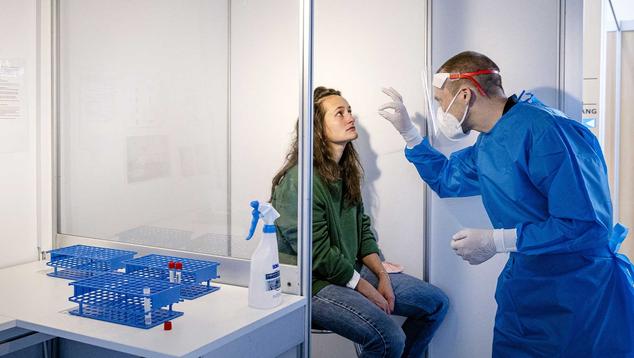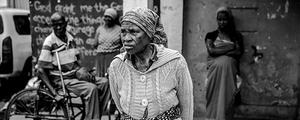Story Highlights
- Eastern Europe scores lower than the rest of Europe on most dimensions of health
- Majority of women in Eastern Europe dissatisfied with availability of quality healthcare
- Women in Eastern Europe more likely to be dissatisfied with pregnancy care
- Women in Eastern Europe more likely to experience health problems
European countries account for most of the countries with the highest scores in the world on the Hologic Global Women's Health Index, which measures critical markers for women's health. But tellingly, none of these countries is in Eastern Europe, where good health and healthcare experiences are scarcer for women.
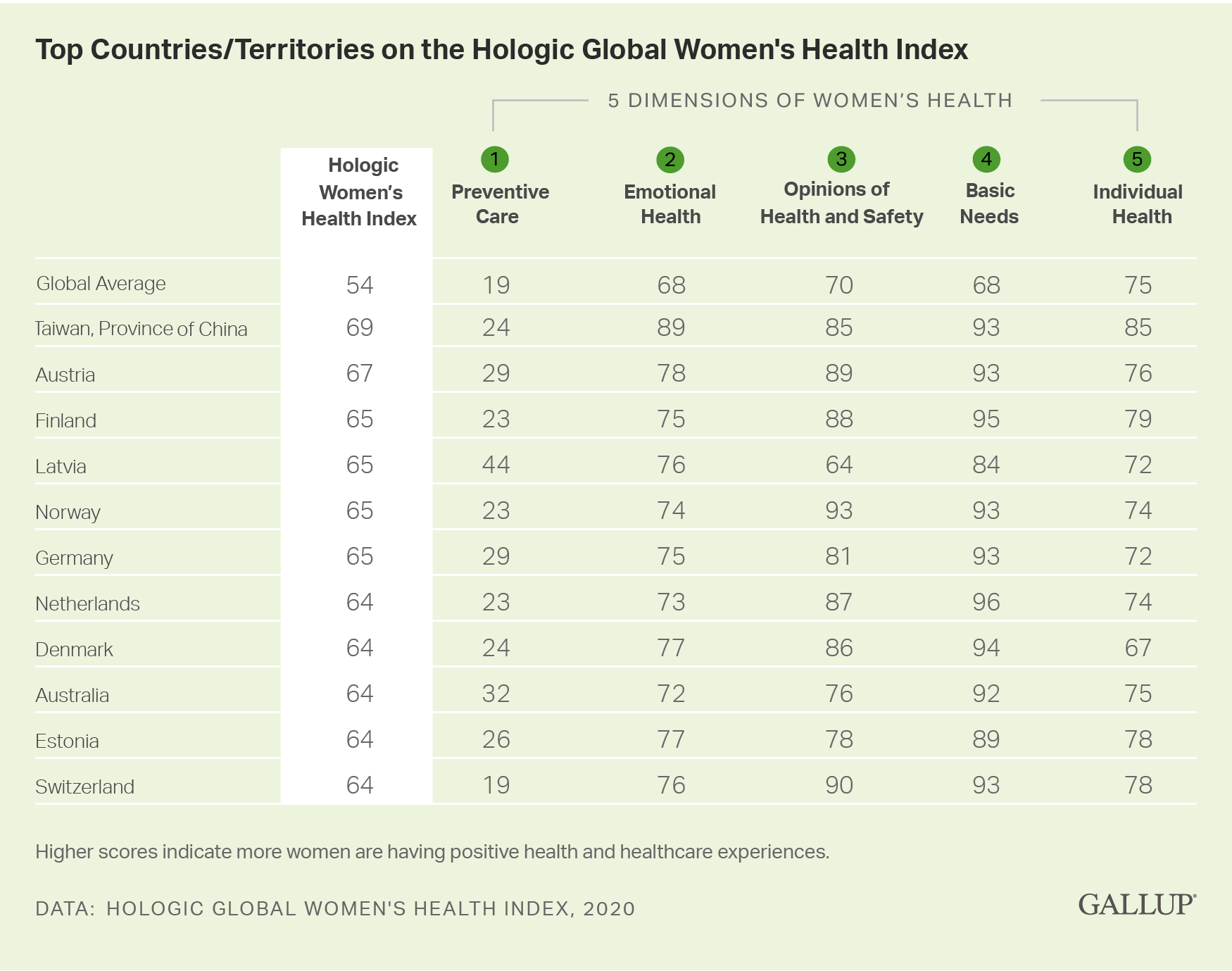
Table. Results on the Hologic Global Women's Health Index show mostly European countries post the highest scores on the overall Index, which measures women's health and healthcare experiences. None of these countries is in Eastern Europe.
The Hologic Global Women's Health Index -- a multiyear, comprehensive survey of women's health first fielded in 2020 -- identifies five dimensions of women's health that explain more than 80% of women's average life expectancy at birth: Preventive Care, Opinions of Health and Safety, Emotional Health, Individual Health and Basic Needs. The countries and territories are ranked across each of these five dimensions, and then those scores are combined to create an overall Index ranking.
Eastern Europe, where women and men already have lower life expectancies than their counterparts elsewhere in the region, posted the lowest scores in Europe on the overall Index, with a score of 53. This is one percentage point lower than the global average of 54 and a full 10 points lower than the score of 63 in Northern Europe and Western Europe. Southern Europe falls roughly in the middle with a score of 57.
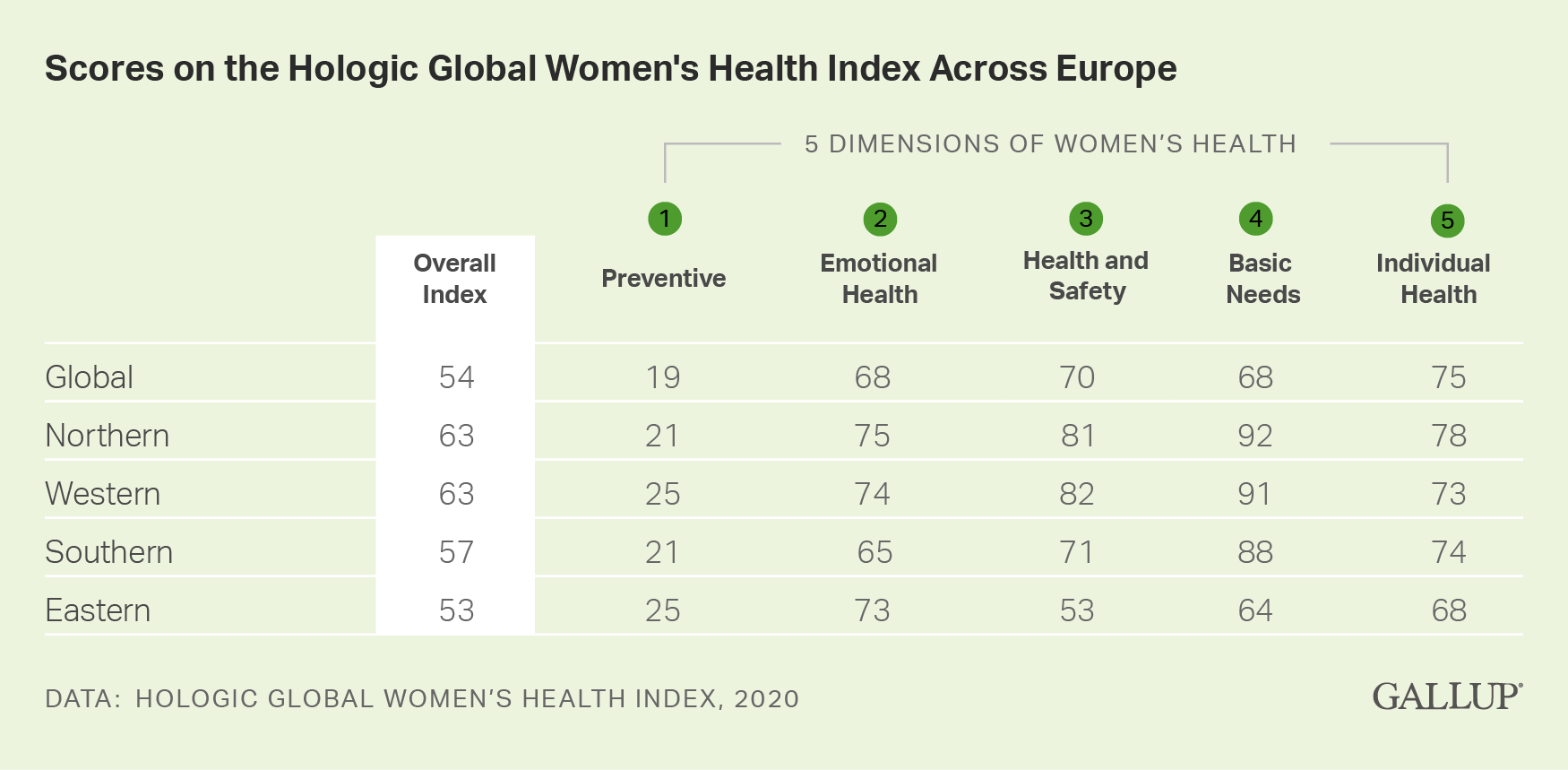
Table. Results on the Hologic Global Women's Health Index show compared with women elsewhere in Europe, women in Eastern Europe score worse in the Health and Safety, Basic Needs and Individual Health dimensions of the Index.
Eastern Europe's overall scores are lower because their scores on three of the five dimensions of women's health -- Opinions of Health and Safety, Basic Needs and Individual Health -- are also dramatically lower than elsewhere in Europe and the global averages on these dimensions. Eastern Europe's scores on Preventive Care and Emotional Health are similar to other scores in Europe.
Majority of Women in Eastern Europe Dissatisfied With Availability of Quality Healthcare
The Opinions of Health and Safety dimension of the Hologic Global Women's Health Index gauges women's satisfaction with access to quality healthcare in general, whether they think pregnant women receive high-quality care and whether they feel safe walking alone at night.
Women in Eastern Europe score worse than other women in Europe on all three aspects, but their high dissatisfaction with the availability of quality healthcare where they live stands out most: The majority (57%) of women in Eastern Europe are dissatisfied with the availability of quality healthcare where they live, compared with 37% in Southern Europe, 22% in Northern Europe and 18% in Western Europe.

Table. Results on the Hologic Global Women's Health Index show that compared with women elsewhere in Europe, women in Eastern Europe are the less satisfied the availability of quality healthcare where they live, less likely to feel safe walking alone at night where they live, and less likely to believe that pregnant women get quality healthcare in their communities.
Lower incomes in Eastern Europe (relative to Western Europe) may factor into the dissatisfaction so many women in Eastern Europe feel about access to quality healthcare. Those in lower-income groups typically see higher barriers to care than those in higher-income groups. However, majorities of women in the poorest 20% (57%) and richest 20% (55%) in Eastern Europe are dissatisfied.
One in Three Women in Eastern Europe Struggled to Afford Food, Shelter
The Basic Needs dimension of the Hologic Global Women's Health Index gauges women's ability to meet their basic needs based on questions about their struggles to afford food and shelter in the past year. Both measures, taken together, are a summary measure of poverty.
Women in Eastern Europe are struggling more than other women in the region on both measures. About one in three women say they have been unable to afford either food (37%) or shelter (34%) at times in the past 12 months -- which at the very least is double the percentages in the other regions.
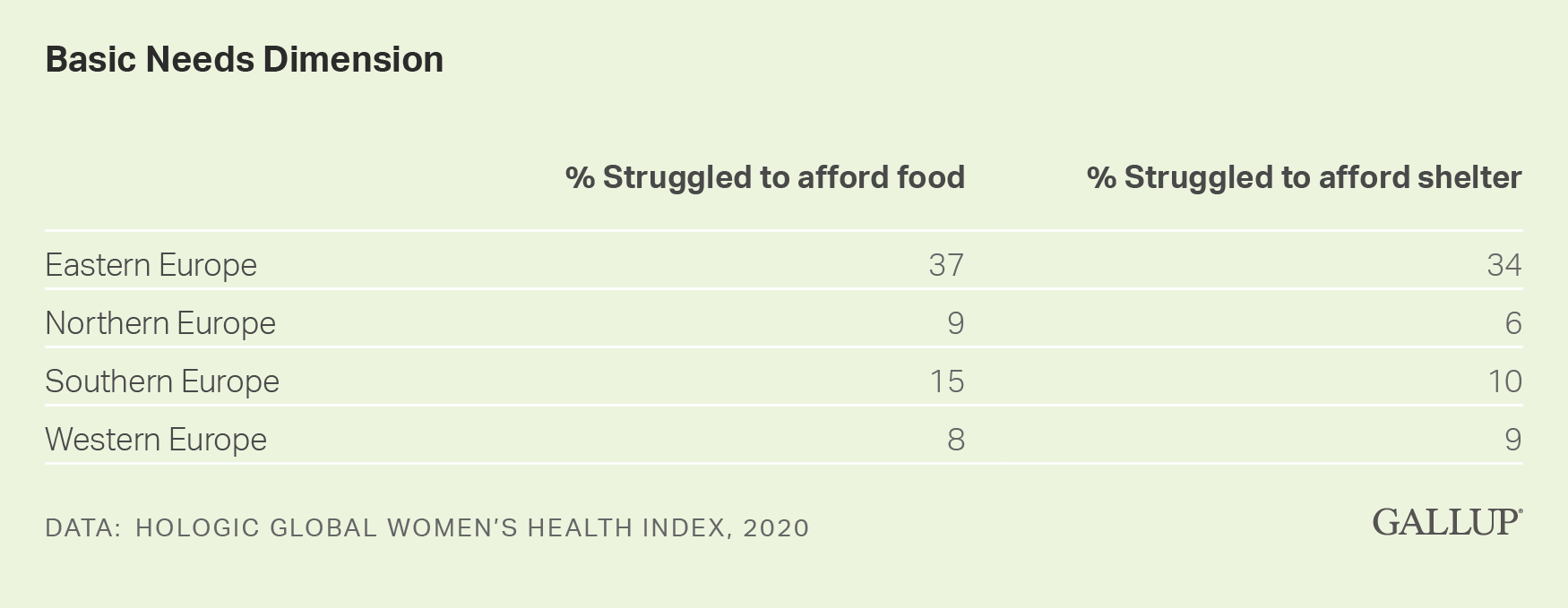
Table. Results on the Hologic Global Women's Health Index show compared with women elsewhere in Europe, women in Eastern Europe are more likely to struggle to afford food and shelter that they or their families need.
One in Three Women in Eastern Europe Limited by Health Problems
The Individual Health dimension of the Hologic Global Women's Health Index gauges women's daily experience of pain and health problems.
Women in Eastern Europe are no more likely than those elsewhere in Europe to say they experienced a great deal of pain the previous day, but they are more likely to say that health problems prevented them from doing activities that people their age normally do. Just over one in three women in Eastern Europe (34%) said health problems kept them from normal activities, compared with about one in five women in the other parts of Europe.
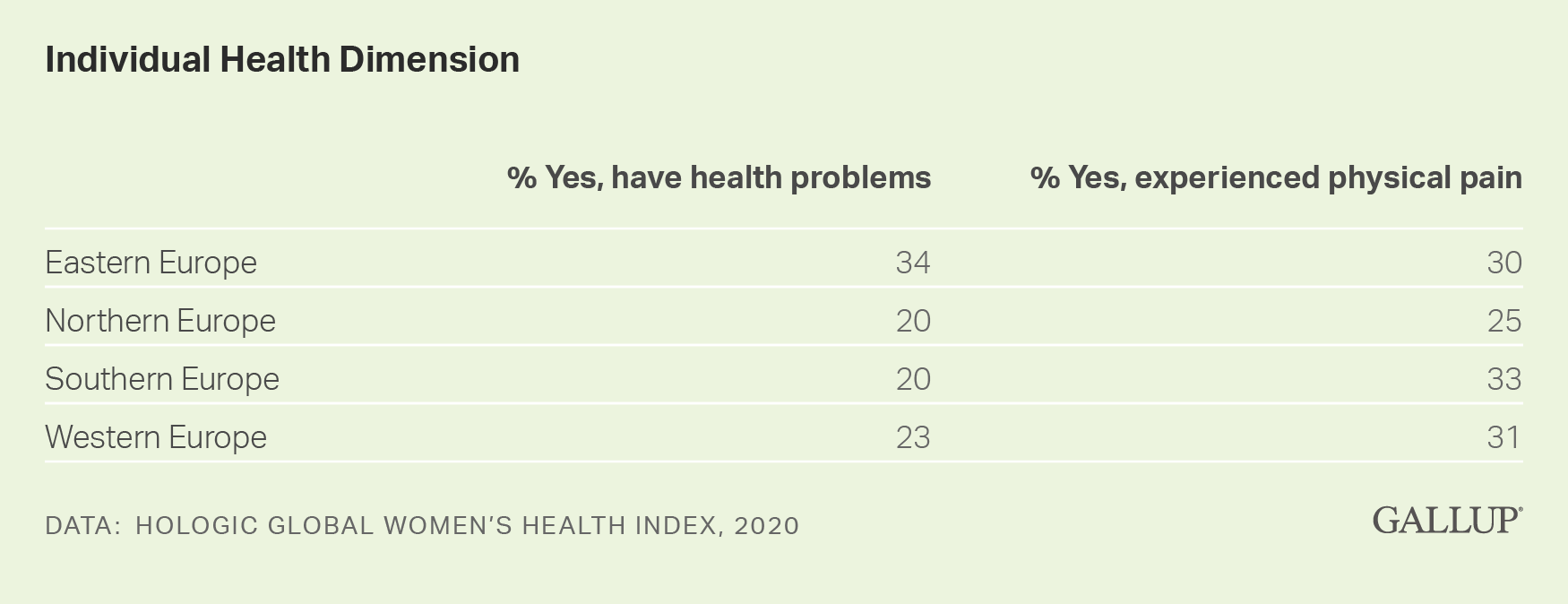
Table. Results on the Hologic Global Women's Health Index show compared with women elsewhere in Europe, women in Eastern Europe are more likely to have health problems that prevent them from doing activities that people their age normally do.
Implications
The scores on the Hologic Global Women's Health Index expose the haves and have-nots of health care and services, even in regions such as Europe, where scores on the surface look strong. But this only further reinforces how every territory or region has room to improve on women's health -- and drives home the need for targeted and tailored interventions that help improve women's life expectancies and their quality of life.
Find out more about the Hologic Global Women's Health Index report.
